Blackened Seasoning
Try this blackened seasoning on your best-loved chicken, pork, or fish recipes. A blend of herbs and spices will add extra flavor to all your favorite meats.
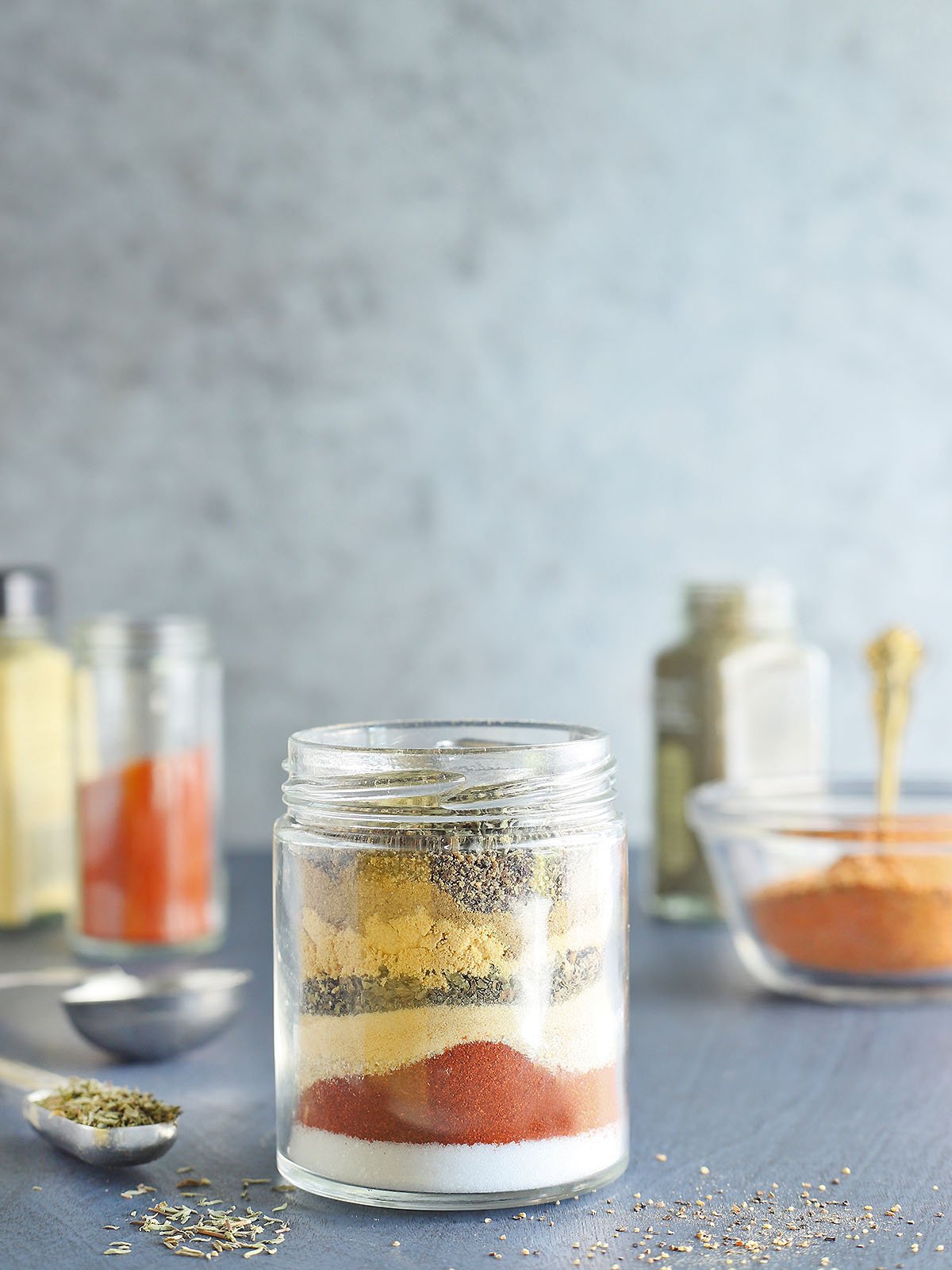
The Cooking Bride is a participant in the Amazon Services LLC Associates Program, an affiliate advertising program designed to provide a means for sites to earn advertising fees by advertising and linking to Amazon.com.
Sometimes I like to season my food with bold flavors instead of just salt and pepper. This blackened seasoning works well on white meats such as chicken, pork, and fish. I use it to add extra flavor to barbecued chicken, as a seasoning for blackened catfish, I rub it on ribs before putting them on the grill, and also to season the outside of these yummy herb pesto rice stuffed pork chops.
What does it mean when food is blackened?
Blackened is not the same as charring, which involves cooking food over high heat without the seasoning to develop a crust or smoky flavor. The term blackened is a cooking term used to describe food that is coated with a mixture of spices and then pan-fried over extremely high heat, causing the seasoning to turn dark brown or black. The technique originated in Louisiana by famous New Orleans Chef Paul Prudhomme.
Ingredients and tools you will need
Most of the ingredients are spices already on hand in your spice cabinet. To make this homemade blackened seasoning, you will need:
- 1 tablespoon` salt
- 2 teaspoons paprika
- 1 ½ teaspoons onion powder
- 1 ½ teaspoons garlic powder
- 1 ½ teaspoons dried basil
- 1 teaspoon dry mustard
- 1 teaspoon cumin
- 2 teaspoons ground black pepper
- ½ teaspoon dried thyme
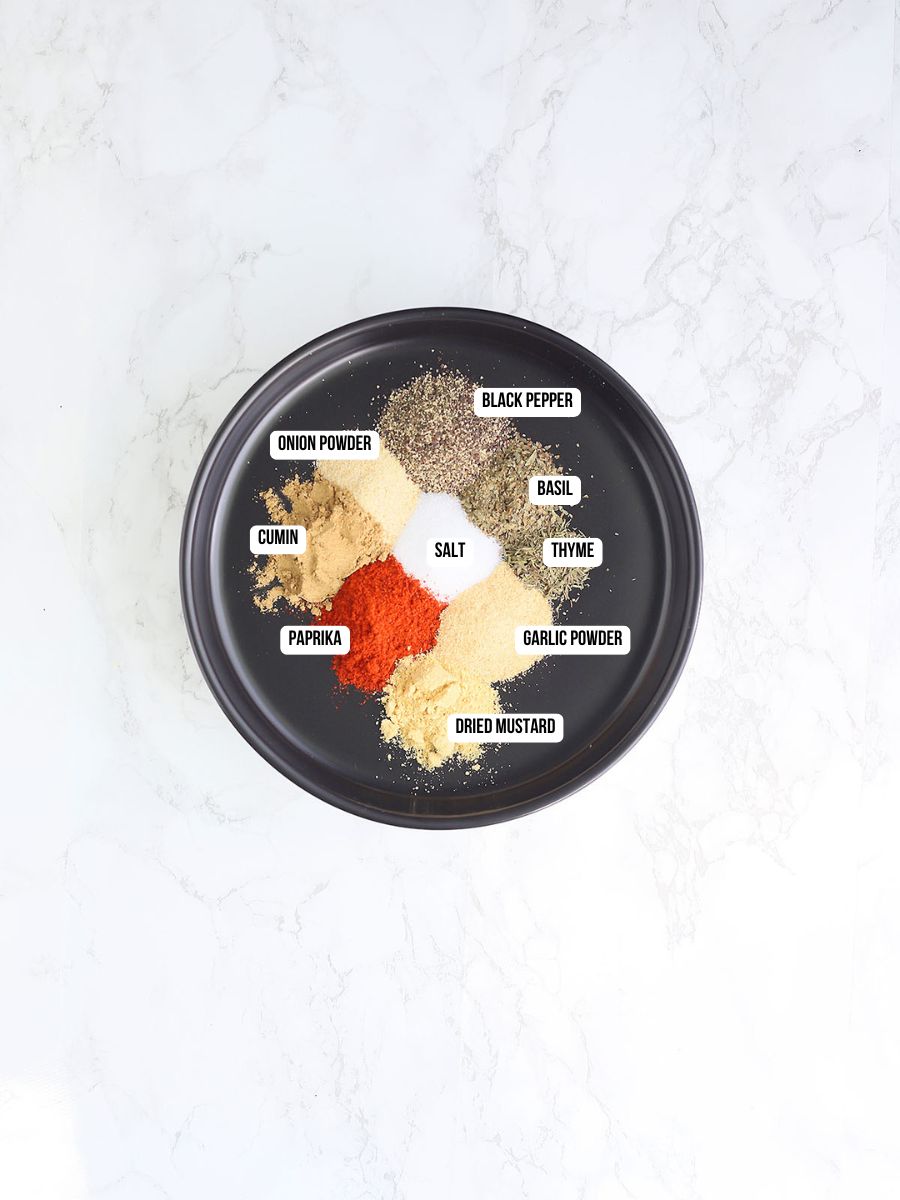
How to make blackened seasoning
There isn’t much to it. Measure all the ingredients into a small bowl. Mix until all the spices are evenly combined. Use it to season all your favorite meat dishes.

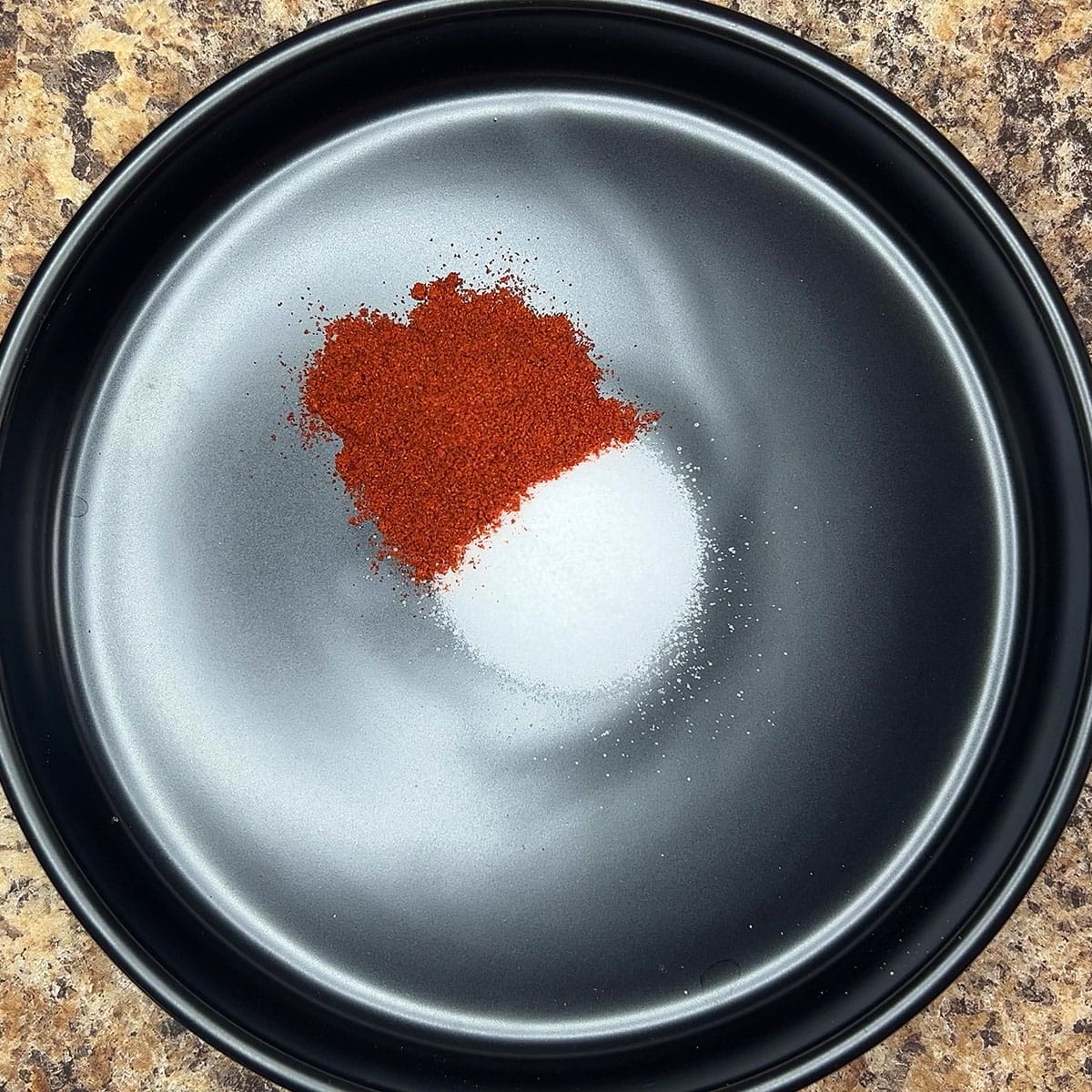
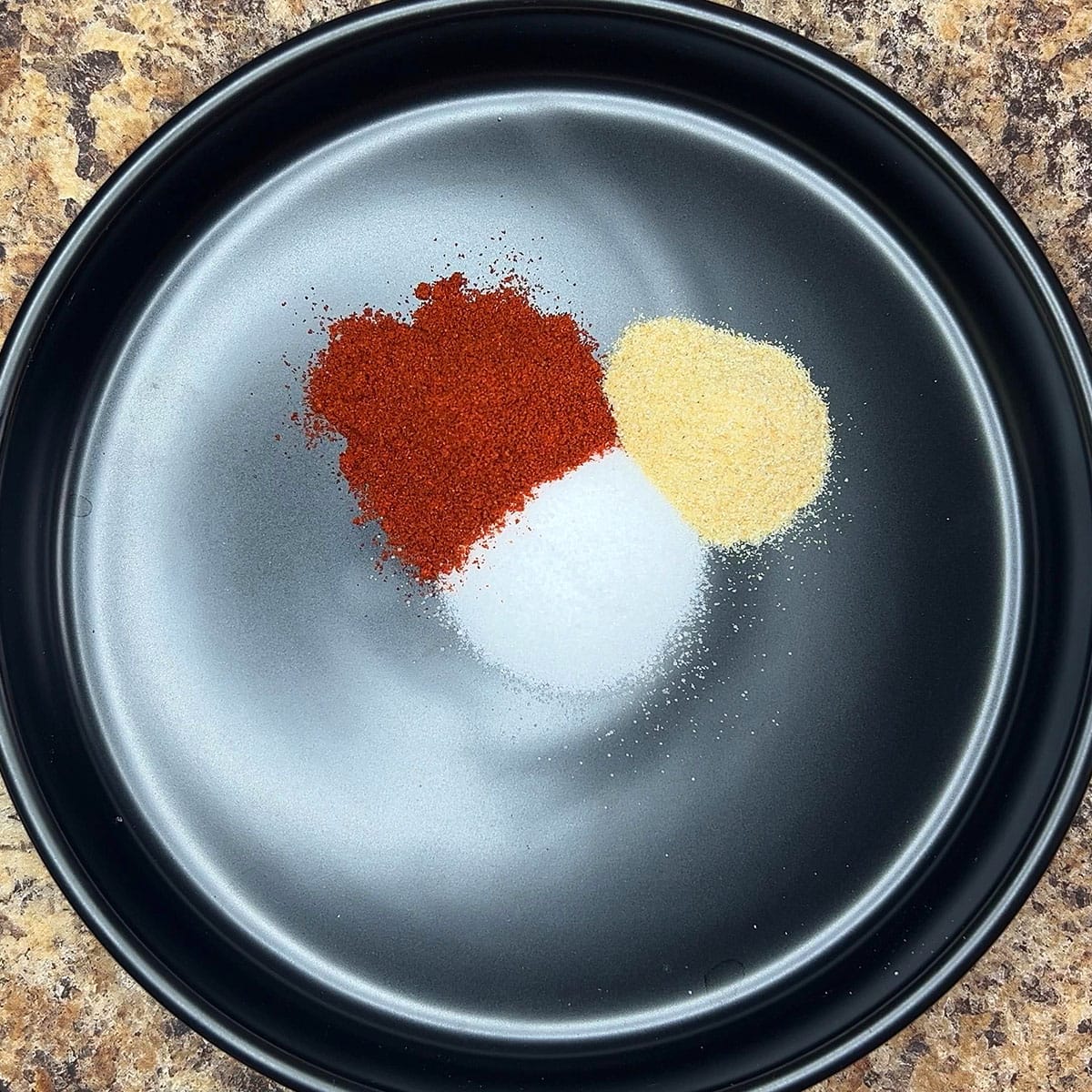
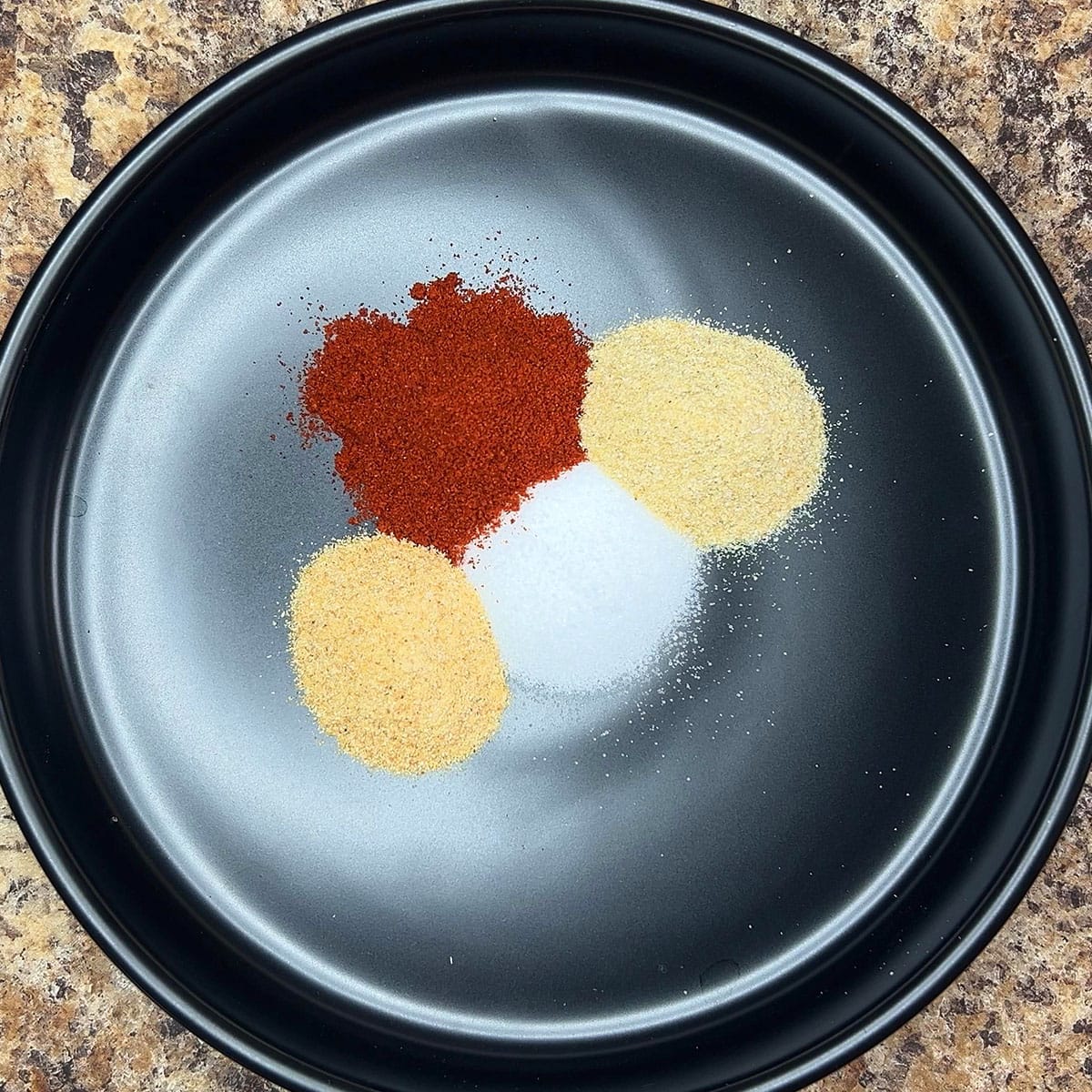
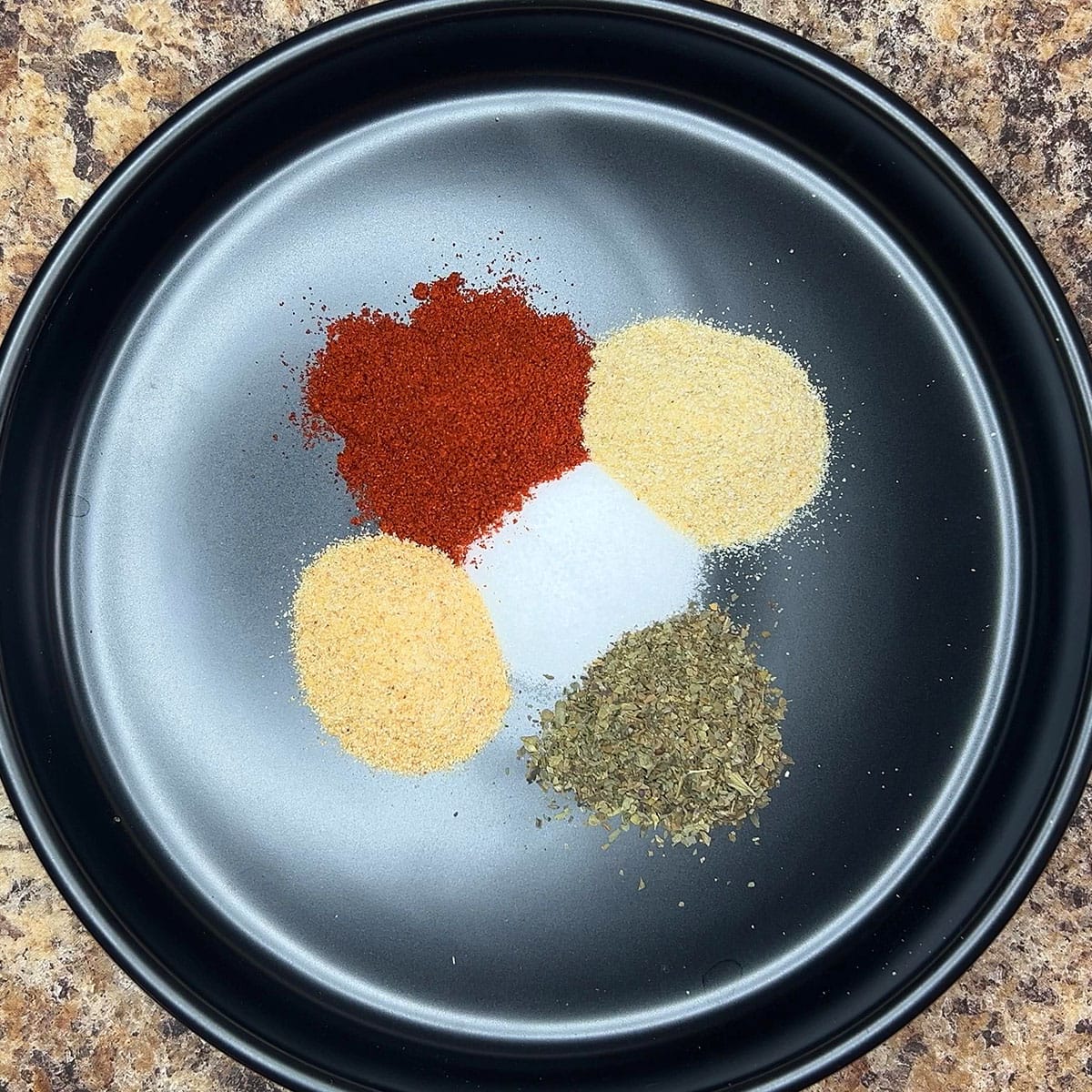
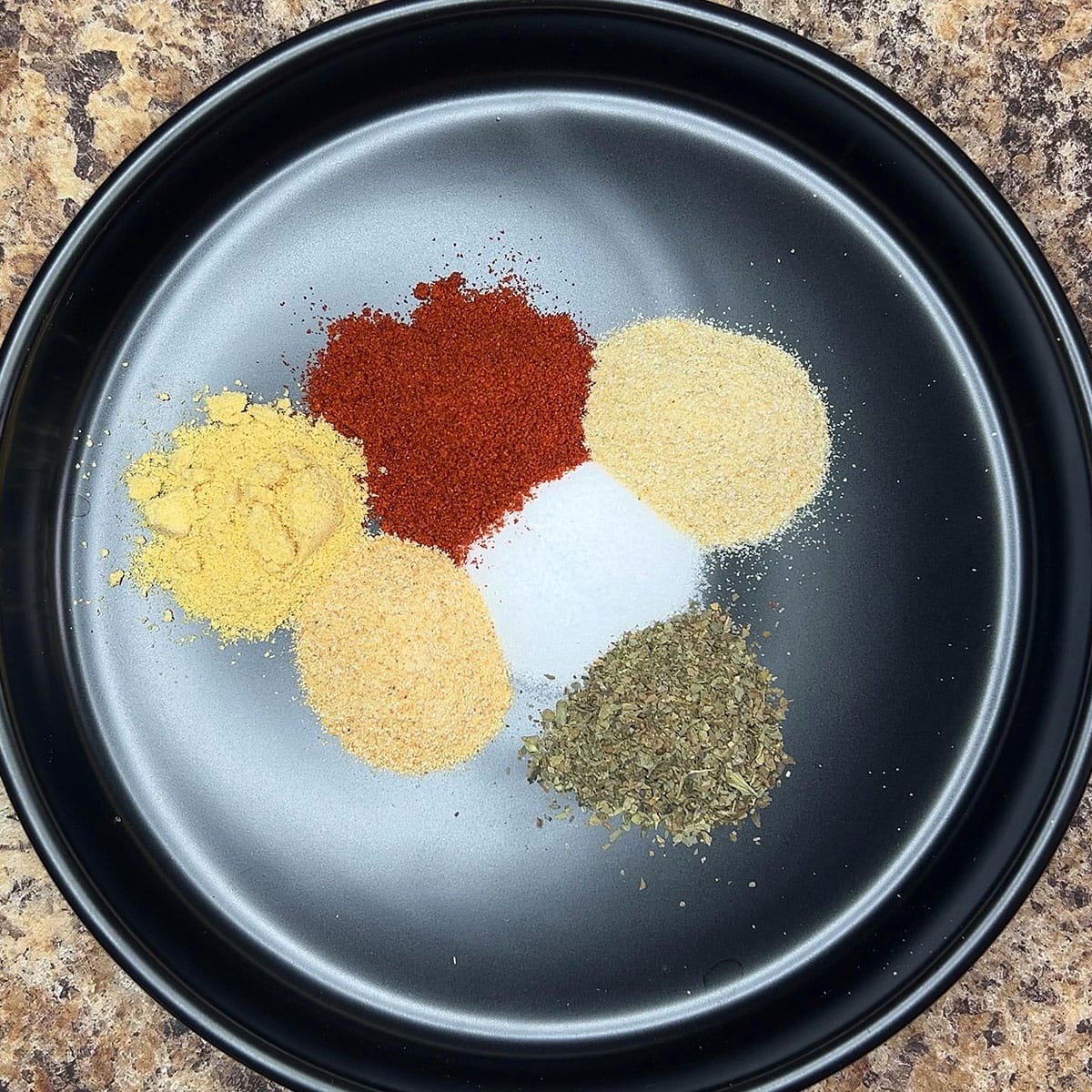

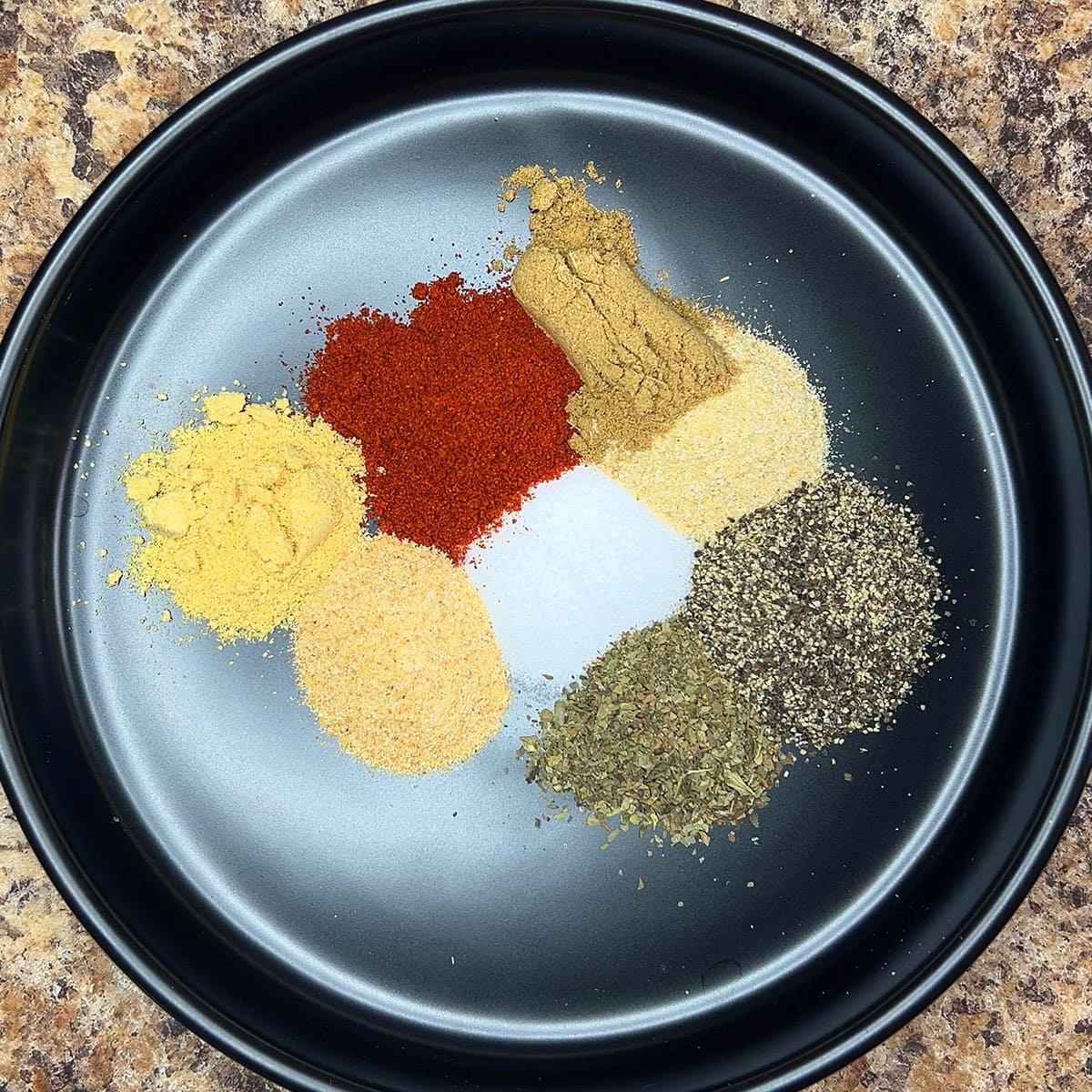

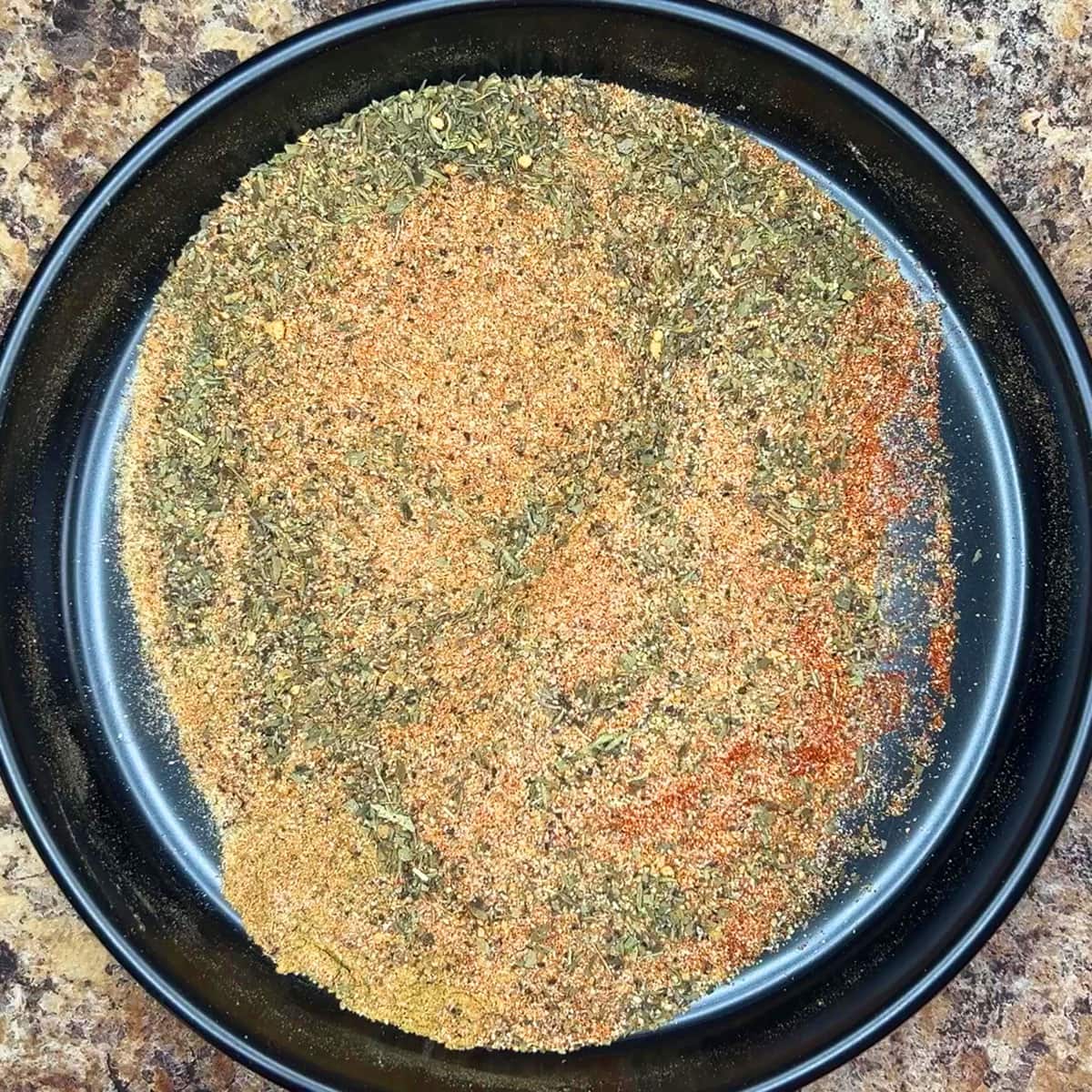
How to blacken food
The traditional way to blacken food is to coat the meat in melted butter and then generously season with the blackening spices. Heat a skillet over medium-high heat.
Add a little oil to the hot skillet, then add your meat. Cook for 2-3 minutes or until the surface of the meat starts to turn dark brown. It’s okay if there are a few black spots, but all over black means the meat is burnt. We don’t want that.
Flip the meat and sear for another 2-3 minutes. If you are cooking something thin like a blackened fish fillet, it may be done by now. However, if you are cooking something thicker like chicken breast, or a pork tenderloin, you will need to finish it off in a 350-degree oven until the internal temperature reaches your desired doneness.
Tips for cooking blackened food
Here are some tips for cooking blackened food:
- Keep it cold. Season the meat while it’s still cold.
- Use a cast-iron skillet. A cast iron skillet retains and distributes heat evenly, which is essential for achieving a good spicy crust. However, a hot stainless steel skillet will also work. Preheat the skillet until it’s smoking hot before adding the food.
- Choose the right oil. Use an oil with a high smoke point, like vegetable oil, grapeseed oil, or clarified butter. This helps prevent the oil from burning too quickly.
- Season generously. Coat the food thoroughly with a blackening spice blend, ensuring an even layer.
- Ventilate your kitchen: Blackening food can create a lot of smoke due to the high heat and spice mix. Make sure your kitchen is well-ventilated—turn on the exhaust fan or open windows. If you have an outdoor griddle, I would take things outside.
- Cook quickly. The key to blackening is high heat and fast cooking. Sear the food for a few minutes on each side, depending on the thickness, to create a flavorful crust while keeping the interior moist.
- Don’t overcrowd the pan. Cooking in batches, if necessary, prevents the skillet from cooling down and ensures each piece of food gets a proper sear.
- Rest the food. After cooking, let the food rest for a few minutes. This allows the juices to redistribute, keeping the interior tender and juicy.
Flavor variations
The great thing about making your own spice blends is that you can play around with the ingredients until you end up with something that suits your own tastes. Since I’m feeding kids, I have to keep the heat level pretty tame. But if you want to kick the heat up to the next level, consider adding cayenne pepper. For a smoky flavor, substitute the regular paprika for smoked paprika or chili powder.
Other uses for blackened seasoning
Even though this seasoning blend was intended for blackening, don’t feel like you have to limit yourself. I don’t! The versatile seasoning on its own adds so much flavor, that I use it just like I would my all-purpose seasoning to add flavor to chicken, vegetables, and shrimp.
Storage instructions
Transfer the homemade seasoning blend to an airtight container. Store at room temperature or in a cool dry place out of direct sunlight. If stored properly, the blackened seasoning should last for up to a year.
Frequently asked questions
Blackened seasoning and Cajun seasoning are similar but not exactly the same. Both are spice blends associated with Cajun cooking and are often used in Southern cuisine, but they have some differences. Cajun seasoning has a balance of heat and savory flavors and can be used in a variety of dishes from gumbo to grilled meats. While you can use Cajun seasoning for blackening in a pinch, blackened seasoning is more suited for achieving the classic blackened crust and intense flavor associated with the technique.
Yes. Leave it out entirely or try substituting it with a seasoning you do like.
Absolutely. I recommend adding the salt last and adjusting to your preference.
Sure can.
The recipe as written makes approximately ½ a cup of blackened seasoning, or eight tablespoons. A good rule of thumb is one tablespoon of seasoning per pound of meat. The recipe card below allows you to adjust the servings via the slider. If you need more, simply move the slider forward until you reach the quantity you need and the ingredients automatically adjust accordingly.

Other ways to use this blackening seasoning recipe
More homemade seasoning recipes
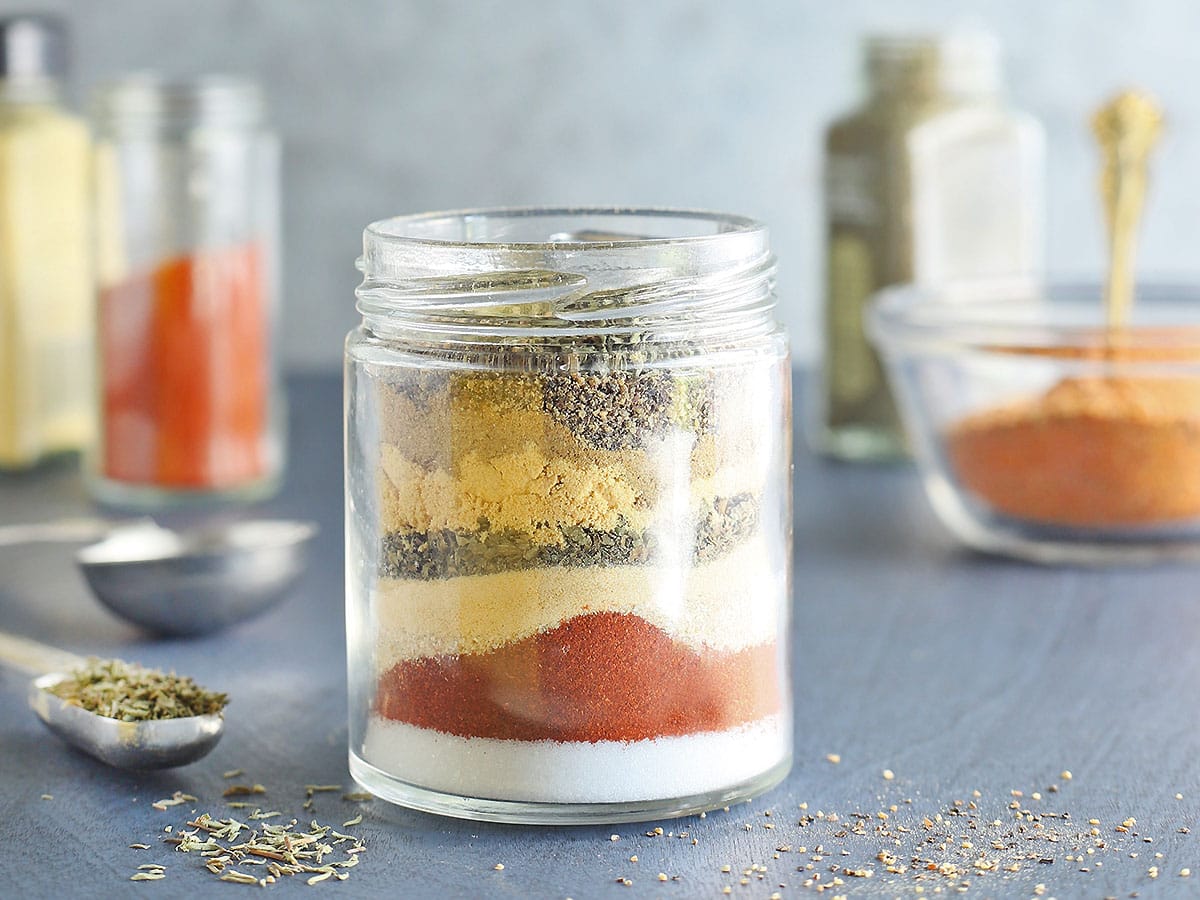
Blackened Seasoning
Ingredients
- 1 tablespoon salt
- 2 teaspoons paprika
- 1 ½ teaspoons onion powder
- 1 ½ teaspoons garlic powder
- 1 ½ teaspoons dried basil
- 1 teaspoon dry mustard powder
- 1 teaspoon cumin
- 2 teaspoons ground black pepper
- ½ teaspoon dried thyme
Instructions
- Combine all ingredients.
- Store any remaining seasoning in an airtight container.


Have any questions? Leave them in the comments!